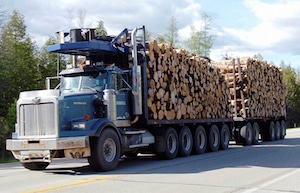
#Transports: Automotive/ Aerospace
Model Accurately Gauges Spring Thaw and its Effect on Roads
A newly developed statistical model is being used by the Michigan Department of Transportation (MDOT) to determine with specificity when moisture under state roads—the result of spring thawing—has eased sufficiently to allow the removal of vehicle-weight restrictions.
Each spring, as roads that have frozen during the winter begin to thaw from the surface downward, melting snow and ice saturate the ground. The roadbed, softened by trapped moisture beneath the pavement, is more susceptible to damage—and vehicle-weight restrictions are put into force.
A major problem with the weight restrictions, however, is that the conditions under the pavement are hard to predict. "In many winters, freeze-thaw cycles don't neatly follow the calendar year," says Richard Endres, head of MDOT's geotechnical services section. "The accuracy and timing of our seasonal load restrictions is critical: even if it is a few days off, it could lead to significant damage."
Traditionally, MDOT has measured soil freezing manually using frost tubes embedded in the ground and filled with a solution that changes color when it freezes. But frequent visits to these state locations for manual frost tube readings are a time-consuming task.
MDOT has also invested in a number of Road Weather Information System (RWIS) stations that measure ground temperatures automatically. A new statistical model developed in collaboration with Gilbert Baladi, a professor in Michigan State University's Department of Civil and Environmental Engineering, now accurately predicts the frost depth based on the RWIS data and the rates at which Michigan's sand and clay soils conduct heat.
"The statistical model uses the maximum and minimum daily temperature data from the RWIS system along with the thermodynamic properties of the soil," says Baladi. The model can be further developed to give an alert that it is time for posting or removing weight restrictions for the Lower Peninsula, the northern Lower Peninsula or the Upper Peninsula, he says.
"Putting load restrictions in place early costs the trucking industry time and money," Baladi notes. "Putting them in late costs the taxpayer through increased damage to the roads. The more accurate you are, the more money is saved."
According to MDOT, a similar model used in Minnesota to help the state more accurately determine when to post seasonal load restrictions may have increased the service life of low-volume asphalt roadways by 1%, potentially saving up to $14 million annually.
